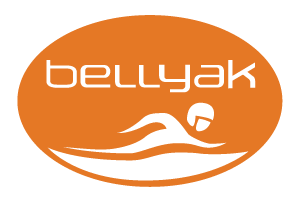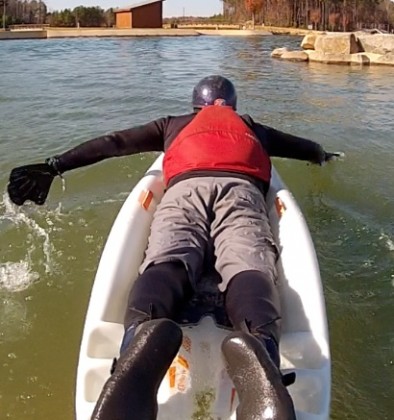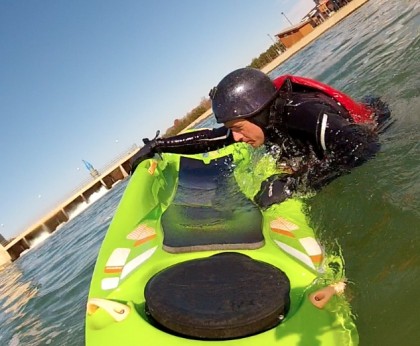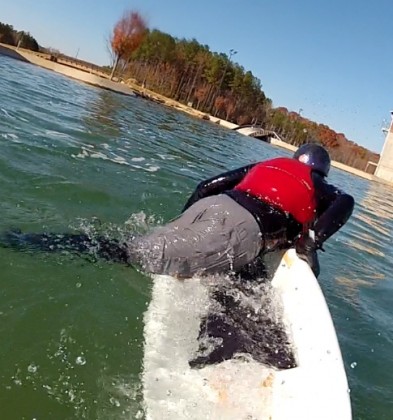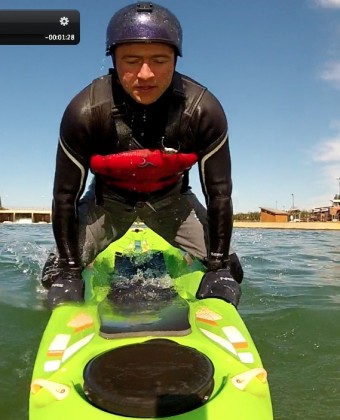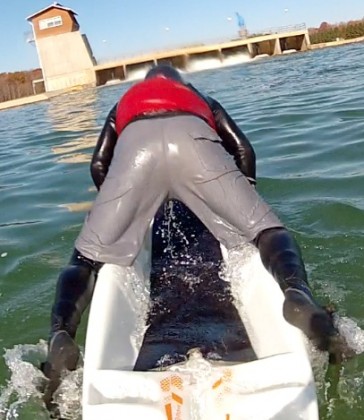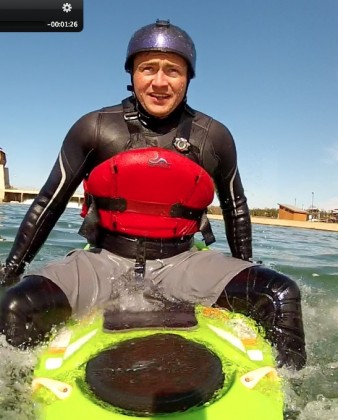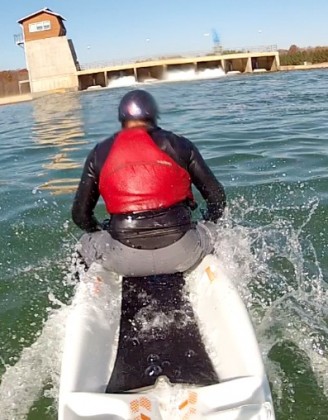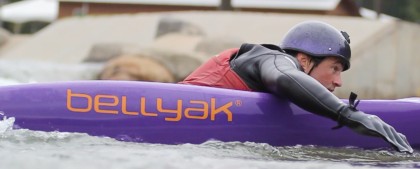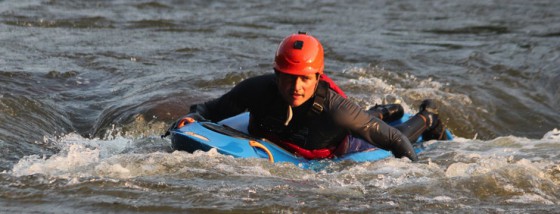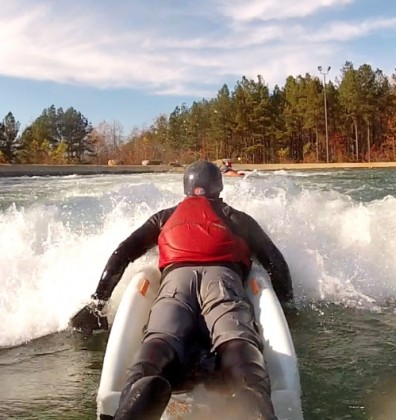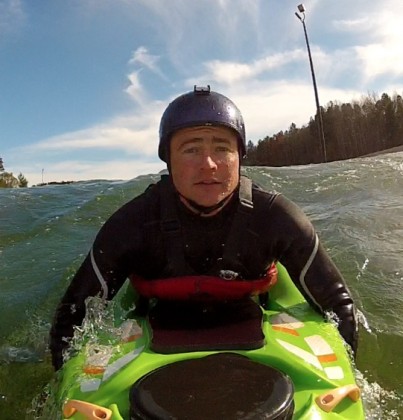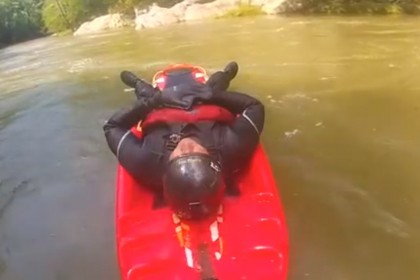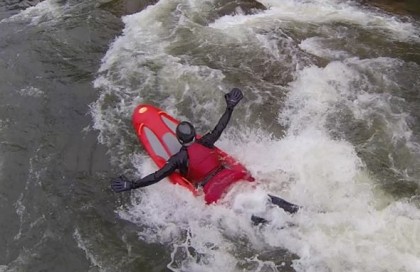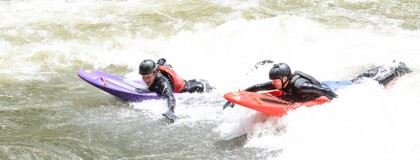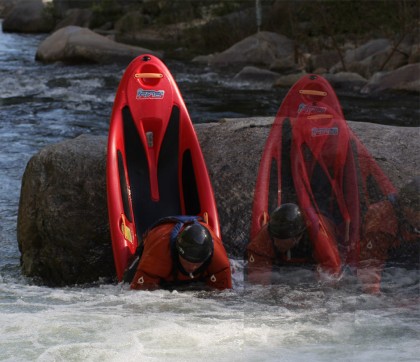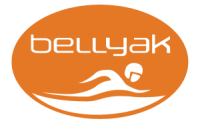What to Expect Your First Time on a Bellyak
You’ve seen the Instagram pics, watched a video, and are ready to get on a bellyak. But what should you expect the first time on the river? Here’s a few of the most common things to expect when you pop your bellyak cherry:
Ease
Since there are no straps or a sprayskirt, a bellyak is much more accessible than a traditional kayak. Gone are the days of learning to roll, and if you ever want to bail – you can! Just hop off the side!
You’ll never get bored
Bellyaking is easy to do, but always has higher levels. It’s easy because laying down and “swimming” is intuitive for almost everyone. There’s tons of progression because there are so many variations and subtleties to paddling the boat in harder water. This combination ensures that you will never get bored as your skills progress…even the same stretch of whitewater is unique and fun, as there are so many variations to how you can ride a bellyak.
You’ll get fit
The bellyak requires balance and a degree of athleticism to successfully paddle. It is harder than a riverboard, easier than a kayak, and more maneuverable than a duckie. Here’s how to master the basics so your first experience go much more smoothly!
Length of trip
The ideal trip for someone’s first time is a maximum of 1-1.5 hours of class II water for beginners. This equates to 2-3 miles, or approximately 5km. Steady moving water with a little flatwater is best since it allows the user to experience flowing with the river vs. having to paddle through large stretches of flatwater. But, since it uses new muscles and people can fall off of the boat, you’ll be kept busy with learning a few new skills!
You’ll learn new skills
Skill 1: Getting on the Bellyak:
You may fall off trying to get on the boat, as your butt might be too far up in the air before coming down on the boat. This leads to a very unstable situation. Instead, try starting in water less than a meter in depth and get on the boat with your chest first, then lay down. You can also try laying in the boat on dry ground to get used to the sensation of laying down first. Lean left and right to feel the lateral stability of the boat. Your hips should be in line with the side handles of the bellyak. Then, when you get in the water, you’ll be more likely to feel the balance point.
Skill 2: Floating:
The first step after dry land is floating in flat water. At this point, you should know where on the boat to be. In case you’re still not sure, look for the boat balanced between the bow and stern…not too far back or too far forward. Now, paddle forward using alternating strokes (similar to a front crawl, with the thumb down). You may have a hard time going in a straight line at first, but don’t give up! You’ll get it! This exercise also shows how easy the boat turns while staying flat.
Skill 3: Re-mounting:
Try this in a calm section of the river! First, flip the boat so it is upside down. When you’re next to the boat, lift the side closest to you up, flipping the boat back over. You an also reach underneath the boat to the opposing handle and pull as you push the other side up. You may want to reach over the boat and try and right it – but this doesn’t always work! Once you are beside the boat, reach across the boat and doing a scissor kick to get back on. You’ve re-mounted!
Skill 4: Changing Positions:
Here we will go from prone to seated. Place hands underneath chest, and straddle the boat with both legs simultaneously as you swing forward to sit on the front 1/3rd of the boat. This is the rest position. To go from seated back to prone, place hands behind you, and bring both legs back around to prone. Both legs must move simultaneously in order for this to be effective.
You can also re-mount from the rear, pushing down on the stern of the boat and sliding it underneath you. Use the front handles to pull yourself into position.
You’ll learn new moving water skills
Skill 1: Entering and exiting the current:
The principles of kayaking or canoeing in moving water are the same here since it is a kayak hull that you are swimming on. It’s necessary to lean downstream as you turn, and lean into your eddy turns, otherwise you will catch an edge and flip. But the bellyak has quite a bit of “secondary stability” so you can feel confident leaning as you turn. Engaging this secondary stability will allow you to glide effortlessly into and out of eddies.
Once in the current, the boat performs very easily. All you have to do is line up with the current, and make small correction strokes to stay on course. When you come to a hole or wave, a strong breast stroke (both hands) right upon hitting the feature will allow you to punch through safely. If you don’t do this, you may fall off! If at all possible, try to hit features straight on, as shown.
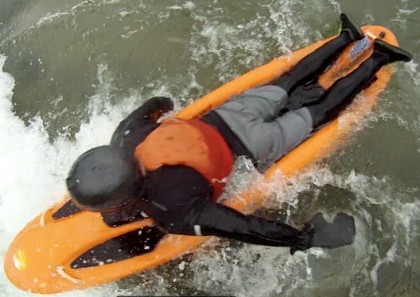
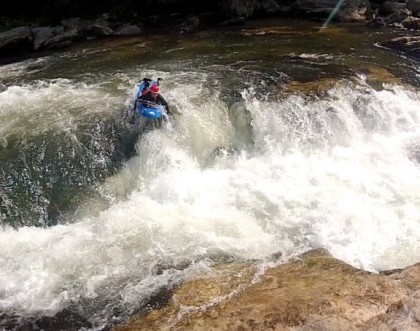
Skill 2: Resting between rapids:
Leanring how to rest between rapids is crucial! The best way is to change your position to seated then lay on the boat to enjoy the scenery!
Skill 3: Using the handles:
The handles are there for re-positioning on the boat, not for hanging on to. Your best position while moving downstream is the superman position, with both arms out to the side. This keeps you balanced, and allows you to brace.
You’ll have fun
Duh! It will be the best!
To note: You can – and should – allow the boat to hit the rocks.Do not use your hands! You will not hurt the bellyak – but you may hurt your hands!
A note to experienced kayakers: We’ve had complete beginners with no water skills master Class II/III whitewater their first time out, and Class V kayakers struggle with successfully navigating the easiest of rapids. Why? If you are a kayaker that has paddled creek boats your entire paddling career, you will not be used to having a boat with edges. Experienced kayakers already know how to paddle, and a lot of them are used to having the boat do the work for them. Modern creek boat design is very forgiving for bad technique, especially on Class II/III water. In order for the bellyak to be as maneuverable as it is, we developed it with a planing hull with edges. As a result, the bellyak is excellent for teaching moving water skills, skills that will apply to any human powered watercraft, be it kayak, Canoe or SUP.
Next Installment: Mastering the basics!
